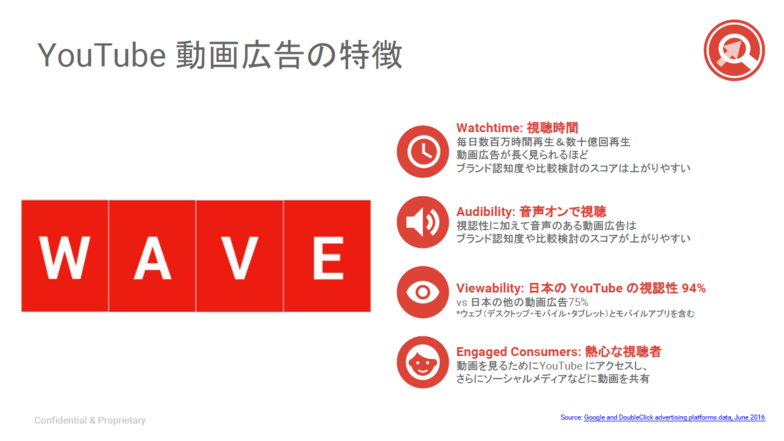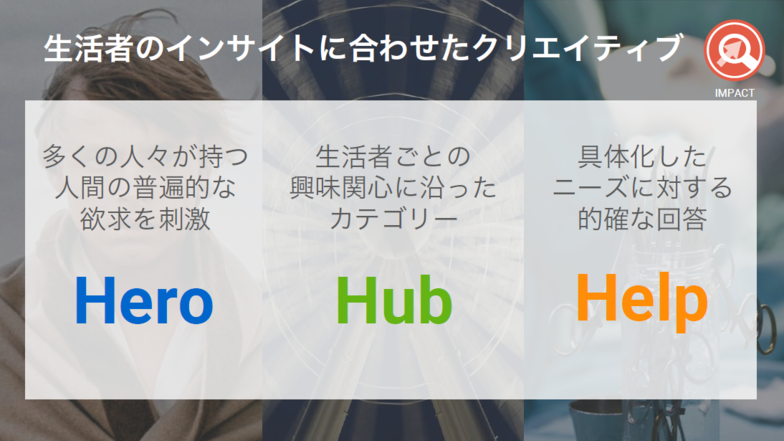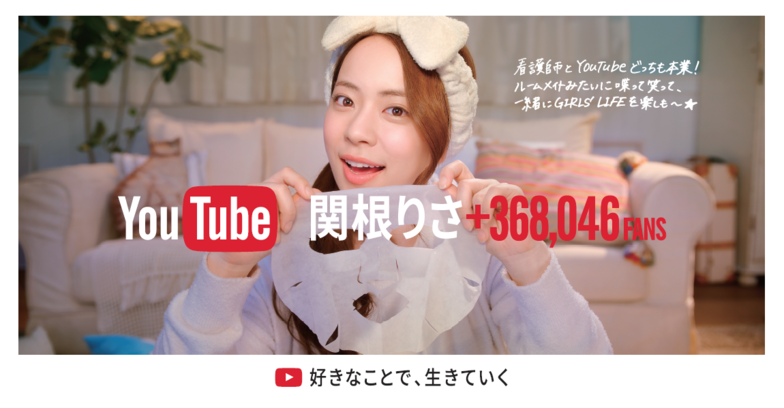Note: This website was automatically translated, so some terms or nuances may not be completely accurate.
Rethinking the World Shaped by the Video Platform YouTube
Google Exhibits at Advertising Week
Hello everyone. I'm Ikegami from Dentsu Digital Inc. I manage the Google-Dentsu alliance and am also involved in business development for YouTube as an advertising platform (Previous article: YouTube Theory for Industry Professionals ).
This time, I'd like to reflect on Advertising Week Asia (AWA), an advertising industry event held in June where YouTube also exhibited with stages featuring numerous video creators, and consider YouTube as an online video platform.
(...As a side note, here's the event introduction by Dentsu Inc. PR, who served as the PR secretariat for Advertising Week Asia and abbreviates the event as "Adwi" instead of "AWA")
Event Hosting, Live Streaming, 360-Degree Video... Initiatives to Bring Fans and YouTube Closer
First, I visited the YouTube Stage within Tokyo Midtown, the AWA venue. Here, YouTubers performed live shows. The first act was Explosion, known for "Honnoji no Hen." As the catchy theme song played, they connected with the audience like a live concert, creating an electric atmosphere.
I've witnessed this sense of unity between YouTubers and fans in real-life settings many times before, but I'm always struck anew by this "slightly different" kind of excitement. I believe this stems from the accumulation of constant communication—through comments on YouTube videos, interactions on social media, and so on. As a result, it creates a more intimate, immediate reaction, distinct from, say, a live performance by a musician you'd normally only see on TV. Looking at the audience, you see a wide range of people, from young women to older attendees. The fact that this atmosphere is created by the entire fanbase, not just a few die-hard fans, is perhaps unique to YouTube.
We asked Mr. Yasushi Hasegawa, YouTube's marketing manager, about the highlights of this stage.
"We're livestreaming the event in 360-degree video, delivering the powerful stage experience—along with the palpable excitement of the fans—to those who couldn't make it to the venue," said Mr. Hasegawa.
Looking closely, you can see some equipment between the stage and the audience seats.

And when we accessed the URL Hasegawa-san provided, the live streaming video appeared. Seeing is believing, so be sure to watch the video below!
"Many people know about VR because it's trending, but generally, it's about on-demand distribution of recorded and edited footage. There are almost no other platforms that can live-stream in real-time with full 360-degree coverage.
At YouTube, we've always wanted to convey the strong bond between popular creators and their passionate fans to a wider audience, with the immersive feeling of being right there. VR, and especially live streaming, was the perfect solution. We hope this event lets you experience both YouTube's latest technology, which enables richer experiences and content for our customers, and the powerful connection between the featured creators and their fans." (Hasegawa)
Latest Video Marketing Case Studies: What are WAVE and 3H?
Next, we headed to the session hall packed with advertising professionals. Seminars by various players involved in marketing and creative work were being held, and we went to check out the sessions related to YouTube.

Under the theme "Video Contents That Win Hearts: Considering Video Utilization in the Mobile Era," YouTube Product Marketing Manager Masanobu Nakamura and Panasonic's Tomoyo Kimura took the stage. In the first half, Mr. Nakamura introduced changes in viewing environments within the context of how to create touchpoints between consumers and businesses. Within this, he introduced the characteristics of YouTube video ads starting from the WAVE metric (Watchtime, Audibility, Viewability, Engaged Consumers).

First, as a video platform, YouTube inherently boasts long Watchtime (viewing duration), a key characteristic that extends to video ad viewing time. Research confirms that longer-viewed videos yield higher brand awareness and comparison consideration lifts. Furthermore, since YouTube viewing primarily occurs with sound on, it offers high Audibility. Video ads are also typically watched with sound enabled. It has been proven that video ads viewed with sound on yield higher brand awareness and consideration lift. Regarding viewability, research indicates that YouTube in Japan has a viewability rate of 94%, which is over 20 percentage points higher than other video ads within Japan. Furthermore, many viewers on YouTube have a specific purpose for watching, making them engaged consumers. Consequently, the attention paid to video ads shown there is high, and a major characteristic is that these ads are often shared on other social media platforms.
Mr. Kimura explained that for his company's products, "the decision-to-purchase cycle is relatively long, and trials before purchase are difficult. The benefit of web video is that it can evoke the actual experience of use after purchase." He introduced the case of "Fudanshi Premium," where video content is produced and communication is developed in stages based on Google's proposed 3H (Hero Hub Help) concept.

Summarizing the session, Mr. Kimura stated, "Advertisers must deepen their understanding of how consumer touchpoints are evolving. Furthermore, leveraging web video's unique capabilities—such as accumulating viewer data for retargeting—is essential for effective communication."
Are YouTubers role models for everyday people?
Passing by the YouTube stage on the way out, an even larger crowd had gathered than before. HIKAKIN, Hajime Shacho, Risa Sekine, MACO, and others... YouTubers active not only on YouTube but also in TV shows and commercials appeared one after another, posing for photos and shaking hands with fans.
Speaking with Risa Sekine after the event, she shared excitedly, "I never imagined that a channel I started with a diary-like feeling would be watched by so many people. Recently, with fan meetings like this, having more fans means I can take on all kinds of challenges, and it makes me incredibly happy!" Sekine boasts immense popularity, with her videos racking up over 78 million cumulative views, yet she also works as a nurse. She's a relatable role model who genuinely balances her job with sharing what she loves.

What has YouTube brought to people?
What struck me anew is the fact that YouTube has formed a new "culture." The YouTube platform has created a new relationship between creators and viewers, different from the traditional dynamics of video content. Just like Sekine-san's example, channels started by ordinary people with a social media-like mindset have, within just a few years, amassed hundreds of thousands of fans. And now, this many people gather to meet them.
Infrastructure factors like advancements in communication environments and changes in devices certainly play a role in this background. However, it's also undeniable that content possessing a different value from traditional "video" has emerged through online video media like YouTube and gained support.
While it's not a simple categorization, broadly speaking, videos previously created by large production teams and a handful of talents gained mainstream acceptance as easily recognizable, star-studded content. However, the emergence of online video platforms like YouTube has brought forth more "democratized" works and creators. These have gained widespread recognition and acceptance, achieving explosive popularity, particularly among the digital native generation.
From an advertising perspective, the proliferation of this democratized content undoubtedly represents one of YouTube's major values: it enables reaching younger demographics with different media consumption attitudes than traditional media could ever access.
Moving forward, how will YouTube as a platform communicate its content? While staying attuned to the culture emerging there, I want to consider YouTube's value for all players.
Was this article helpful?
Newsletter registration is here
We select and publish important news every day
For inquiries about this article
Author

Naoto Ikegami
Dentsu Digital Inc.
Planning Division 6
Born in Yamagata in 1990. Joined Dentsu Inc. in 2012. Since joining, has been responsible for digital media including portal sites and comprehensive lifestyle information sites within the Digital Business Center. Joined the Digital Platform Center in 2016. Currently responsible for alliance operations with Google, driving various collaborations between Dentsu Inc. and Google that extend beyond the media domain. Member of the cross-functional internal organization "Team Google."
